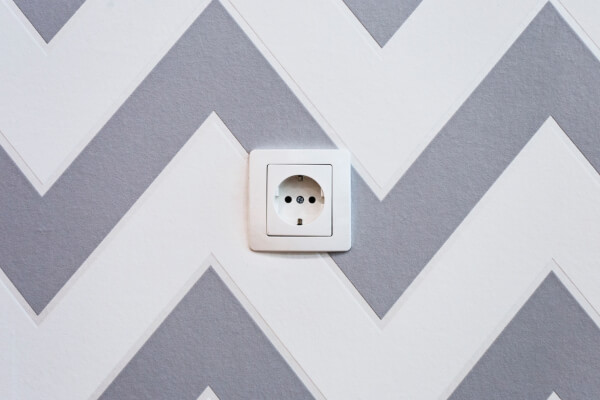Driving in Italy as an American: full guide
Everything you need to know about driving in Italy as an American

While credit cards are becoming more widely accepted, Italy works mostly on cash.
Many taxi drivers, tour guides and other service providers won’t accept plastic money. Some stores even offer a discount - or sconto - if you pay for your purchases in cash. Luckily, ATMs are plentiful, making it easy to access your cash.
Here’s a quick guide to show you what you need to know about using ATMs in Italy.
You can find ATMs in Italy on almost every block in major cities and in the main square in smaller towns and villages.
ATMs are normally placed under a large dark blue sign that says* bancomat* - the Italian word for ATM. Some are behind doors for security reasons. You’ll need to use your bank card to unlock the door in order to access the ATM.
You can use this universal ATM locator to find an ATM near you.
ATMs are also widely available at airports. However, they often run out of cash, especially at the weekend. It’s best if you bring a few Euros with you just in case.
Italian ATMs work with MasterCard (Cirrus and Maestro) and Visa (Plus) bank cards. These are the most widespread card network services, so chances are that at least one of your cards will work. You can also find the closest compatible ATM with these Visa and MasterCard ATM locators.
Your bank can confirm if your card will work abroad. You should also inform your bank of the dates when you’ll be traveling. If you don’t, they could consider your transactions suspicious and freeze your card.
Most Italian ATMs have a daily limit of €250.
It often works out cheaper to make one large withdrawal rather than a number of smaller ones. Because of this, you should check with your bank whether your card can handle the €250 daily limit. If your limit is lower, try raising it accordingly.
Italian ATMs only accept numeric PIN numbers. They must also be four digits long. If yours is longer, you’ll need to change it at home before leaving for Italy.
Italian ATMs don’t charge usage fees. The conversion to Euros is also worked out using the mid-market rate, so you’ll get the fairest exchange rate possible.
However, you’ll still need to look out for other fees and charges, such as international conversion costs.
Certain ATMs may offer the option of charging you in your home currency. Don’t fall for this exchange rate rip-off.
Transactions in your home currency are performed using Dynamic Currency Conversion. This means the ATM will make up an exchange rate for you instead of using the mid-market rate. Always choose to be charged in Euros when in Italy.
Your home bank may charge fees for withdrawing from a foreign ATM.
The amount varies from bank to bank and also depends on the type of account and bank card you have. Normally, banks charge a withdrawal fee and a foreign currency transaction fee. These fees apply on every transaction; and may be either a flat fee or a percentage (usually in the region of 1% to 3%).
Want to exchange Euros? See how much you may save with a Wise Account:
There are various ways you can reduce ATM fees, or even eliminate them altogether. Here are a few ideas.
Most banks have a correspondent relationship - or partnership - with banks in other countries. Using your bank’s correspondent in Italy may mean free or cheaper withdrawals. You can find who your bank’s correspondent in Italy is and what the benefits are by asking at your local branch.
A group of major banks, including Bank of America, Barclays, Deutsche Bank and Westpac, have formed the Global ATM Alliance. If your bank is a member, you can use the ATMs of other banks in the alliance without paying a withdrawal fee. Italian bank BNL (Banca Nazionale Del Lavoro) is part of the alliance.
It’s usually a lot more expensive to withdraw using a credit card than it is with a debit card.
Credit cards tend to have higher transaction fees. They also attract interest, because the transaction is a loan, not a withdrawal from your own cash reserves.
Some banks - Charles Schwab and Metro Bank, for instance - don’t charge foreign transaction and ATM withdrawal fees. If you travel frequently, you might want to consider an account with one of these banks.
If you have an Italian bank account, or know someone who does, use Wise to send money to Italy ahead of time and save even more. Not only does Wise use the real mid-market exchange rates to convert your money (which almost always beats the banks), but since your currency is received and sent via local banking systems in both your home country and in Italy, all those nasty international fees magically disappear. Give it a try.
*Please see terms of use and product availability for your region or visit Wise fees and pricing for the most up to date pricing and fee information.
This publication is provided for general information purposes and does not constitute legal, tax or other professional advice from Wise Payments Limited or its subsidiaries and its affiliates, and it is not intended as a substitute for obtaining advice from a financial advisor or any other professional.
We make no representations, warranties or guarantees, whether expressed or implied, that the content in the publication is accurate, complete or up to date.

Everything you need to know about driving in Italy as an American

Everything you need to know about wine tasting in Tuscan wineries.

In this article, find your Italy packing list essentials. Discover must-haves for a seamless journey to make the most of your trip.

Headed for a gastronomic experience in Italy? Find out how to eat like a local in this handy guide.

We cover all you wanted to know about electricity and power adapters for Italy. You'll also learn about plugs and power converters. Read on.

There’s so much to see and buy in Rome. Fendi, Bottega, Veneta and Prada, among other local brands. There’s also culture to consume and architectural beauty...